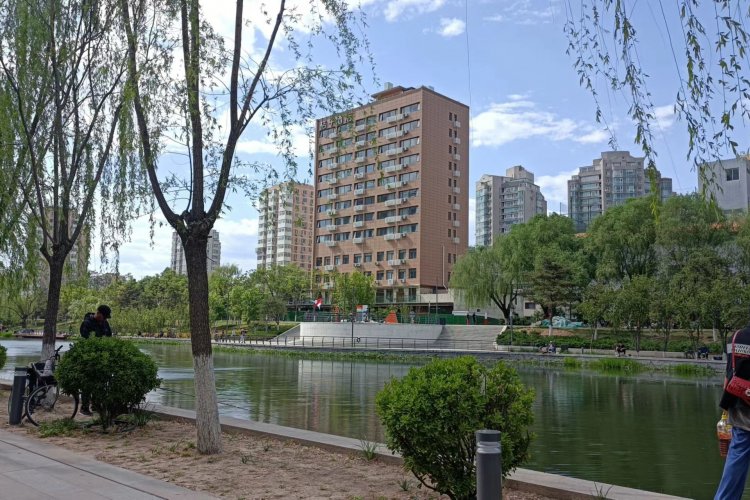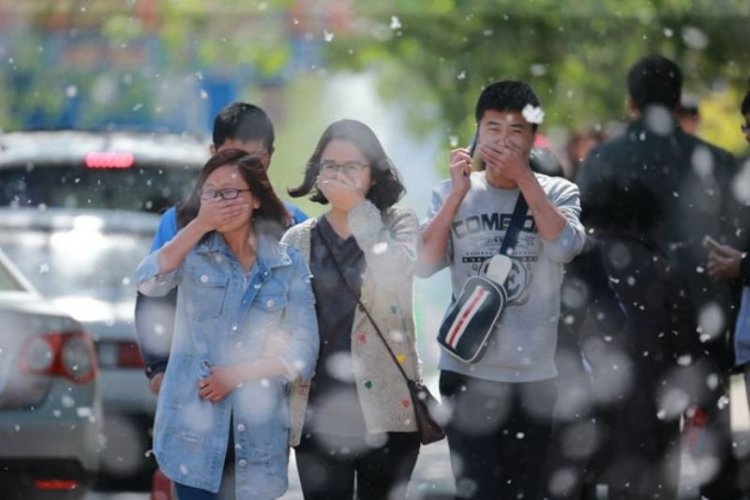Beijing’s Pollution: A Land of Fairies and Fog
Beijing’s pollution the past few weeks has been bad, but that alone isn't newsworthy. What has made this recent slew of hazy days so interesting is the attention that it has garnered on the Internet and in the local and international media, as well as the government’s various responses – including a puzzling reference to fog fairies.
Currently, the government's problem isn't so much the pollution as the US Embassy AQI (Air Quality Index) rating – the go-to pollution tracker for Beijing expats and two-year-old thorn in the side of the Chinese authorities. A recent Wikileaks release included a cable from 2009, during the start of the @Beijingair Twitter feed, that lays out exactly why authorities wanted the reports stopped:
The existence of the machine and the openness of the Twitter site are 'not fair' to the Beijing EPB [Environmental Protection Bureau]. [Authorities] cited that the Twitter site’s consistent characterization in recent days of Beijing air quality as 'unhealthy' or 'very unhealthy' takes credit away from 'all the progress' Beijing EPB has made in recent years in improving the city’s air quality. Wang added that the fact that the Embassy’s air quality data is not based on the Chinese-approved standards for measuring air pollution is not only confusing but also insulting.
Last year’s inadvertent tweeting of “crazy bad,” when air quality went beyond 500 (the index's upper limit) for the first time, and new NASA photos of pollution over China probably aren't helping matters.
Now Chinese citizens are becoming aware of this alternative to the government’s own air quality index. At the moment, China only measures airborne particulates 10mm and larger (i.e. PM 10), in comparison to the US Embassy’s more sensitive measurements of PM 2.5. A recent article in Chinese news has reported that in the past ten years, pollutants of PM 10 have gone down, while smaller ones at PM 2.5 have been rising, which may partially explain why netizens are demanding stricter standards from the government (and how the EPB can claim air quality is on the rise). A recent Weibo poll asked whether the city should adopt a system similar to the US Embassy’s; 98 percent of respondents are in favor of stricter readings. Those other two percent probably work in Beijing’s heavily (and expensively) air-purified government offices.
The government’s response to this Internet uprising has been a mixture of finger-pointing and denial. Authorities continue to blame the US Embassy for engaging in pollution “hype” and characterize their readings as unreliable, unscientific and inaccurate. They’ve also taken an over-the-top defensive stance attempting to distinguish Beijing’s haze from pollution, calling it “heavy fog.” With some fast-talking about humidity levels and percentages, officials have pointed out that “the occurrence of heavy fogs does not necessarily mean a decline in air quality.” Meanwhile, the deputy director of the Beijing Environmental Protection Bureau has tried to sugarcoat the issue with a fairytale comparison. The director of the science-based agency has blogged: “Fog is not pollution … In Chinese we usually say a fairyland is wreathed in fog. How can it be a fairyland if it is surrounded by pollution?”
When not dismissing actual concerns with magical imagery, the EPB is taking measures to alter and legitimize the standards it uses. The agency has said it will improve its air quality readings, though no timeframe has been offered and there has been no mention of exactly what it will measure. Also, the Bureau has opened its doors for public tours – but only on Tuesdays between 2-4pm. (So much for that transparency.) Most importantly, will this tour include a fairytale story hour?
The government isn't the only group denying pollution levels or concerns. The Global Times must have access to those government air-purifiers based on their stance that warning people to wear masks for pollution levels over 500 is overzealous. When US Embassy readings went "beyond index" last month, Dr. Richard Saint Cyr – a family doctor at Beijing United Family Hospital, beijingkids columnist, and medical blogger – encouraged Beijingers to wear masks to protect against the health risks associated with high levels of pollution. The Global Times response was that “Chinese doctors, local residents and the Municipal Environmental Protection Bureau” don’t see the pollution as a high health risk, and quoted the EPB deputy director, and friend of the fairies, as saying “Saint Cyr's suggestions did ‘not reflect the real air conditions’ in Beijing.” But since his reality involves gossamer wings and pixie dust, we'll opt for the good doctor's advice.
Photo: Latimes.com, earthobservatory.com


